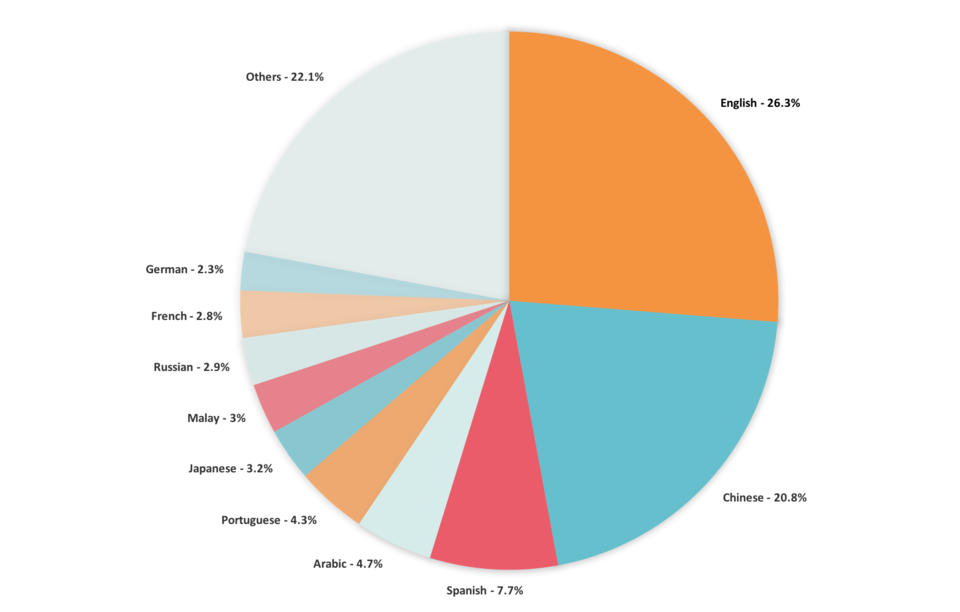You have definitely thought about multilingual content if your business operates in a global marketplace. As with a sales representative not speaking the local language, it’s bad move to try to cover multiple locales by speaking just one language in online and offline content.
There are two simple points to consider:
- Can they understand you? A recent report by Common Sense Advisory found that “84% of business buyers are more likely to buy a product with online information in their language” (Common Sense Advisory - Localization Matters, 2014).
- Can they find you? It’s not just a problem when potential customers can’t understand your communication, but search engines prefer the use of local languages as well. Your Search Engine Optimisation (SEO) program will receive a massive boost through the creation of multilingual content. It’s all about ranking better in SERPs (Search Engine Results Pages), namely the .de, .fr, .cn, etc versions of google.
Packed with opportunity
The general assumption is that everyone understands English or at least the majority of the world will understand it in the near future. But this borders on the attitude of a clichéd tourist gradually increasing volume to be better understood by a confused waiter. The fact of the matter is that you'll increase leads in a locale if you speak the local language. Even if people do understand English, when it comes to important matters such as parting with one’s hard earned cash, you’d rather do it in your native tongue. What’s more, events like BREXIT put its status as the world’s lingua franca in doubt.

English isn’t the main language spoken at home for 1 in 4 people in London – Office for National Statistics
The majority of the business world hasn’t taken advantage of the huge amount of opportunity for brands that create quality multilingual content. English is used by 53.3% of all websites whose content language is known to W3Techs, a group that provides information about the usage of technologies on the internet. But in reality, only about 5% of the world’s population are native English speakers. Even when you take into account that more English speakers are online, this only makes up 26% of the total internet users in the world.
Don’t assume anything
In an ideal world, aspirational brands would do more than just regular translation. To truly connect with people, they would leverage languages by having native speakers co-creating content in coordination with the global brand headquarters. This extra outlay does pay dividends, those that manage to speak like a local gain trust, authenticity and attention.
The next best solution
However, the reality of budgets and deadlines does not allow for this to be implemented in most cases. According to Forrester Research, a lack of budget or people is the most reported barrier to success (The integration imperative of digital experiences, Forrester August 2015). Freelancers are what the majority of brands use. But this is how you do it right: work with a consistent team of language experts who are skilled in your industry.
As with most things in life, time, understanding and clear communication help build a strong collaborative relationship. And when goals are aligned in this way, the quality of the output is better. The more time and information you give the translator, the better the outcome will be. So remember to brief the translator as you would an in-house copywriter, be available for questions during the process and to leave ample time to write some quality multilingual content.
Avoid working with a new translator for every piece of content. The voice will be inconsistent, the quality will be unpredictable and time will be lost. What may seem obvious is unfortunately not the way most businesses that outsource translation work. Content that is meant to inform, engage and entertain is sent off for translation with little or no direct contact between the translator and content owner. The result is normally not what a self-respecting brand would strive for and in some cases it can damage brand perception.

Internet World Users by Language – Internet World Stats
Your product is worth it
Translation is often the forgotten part of the content creation process. But investment in languages when making engaging content is vital for the customer experience. If you don’t have the resources for a dedicated writer and editor for each of your target languages, which is the ideal solution, make sure you prioritise the localisation stage when creating quality content and build a strong team of translators. Your customers will thank you for it.
